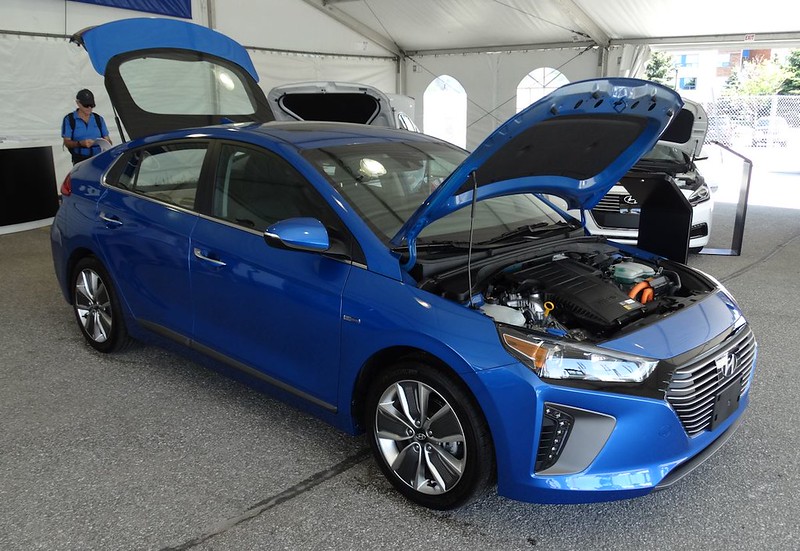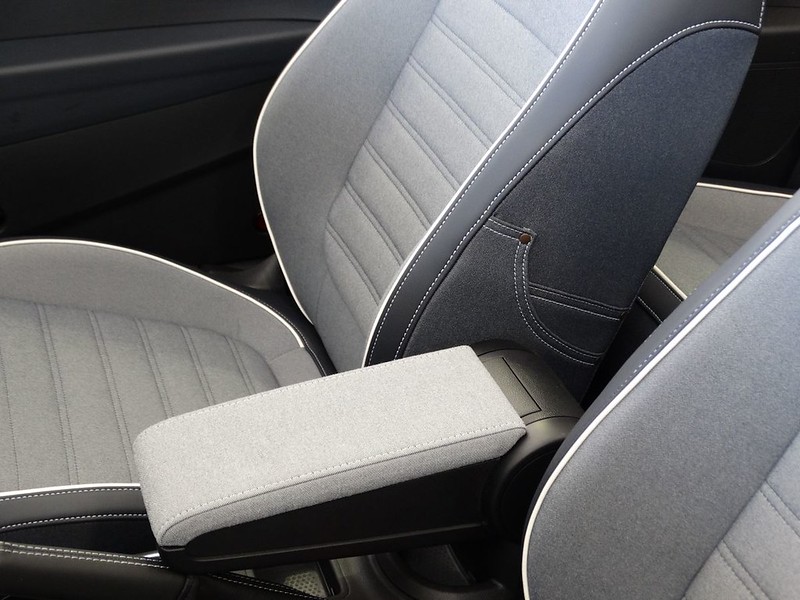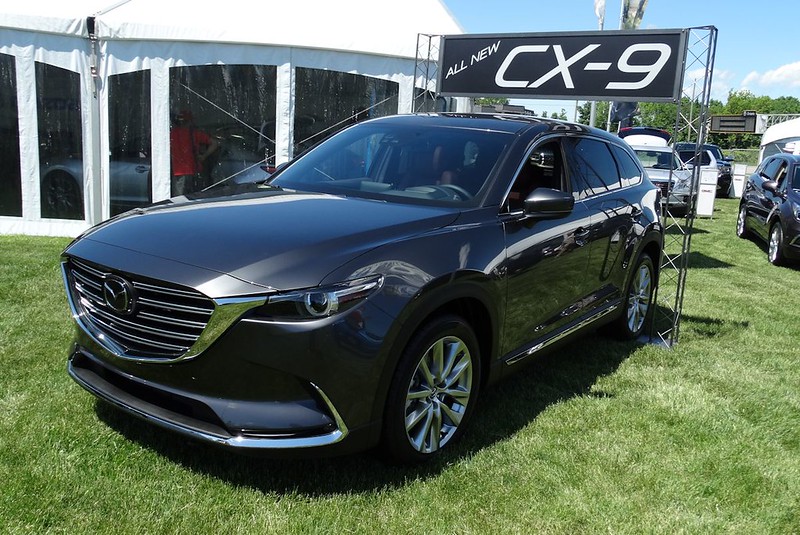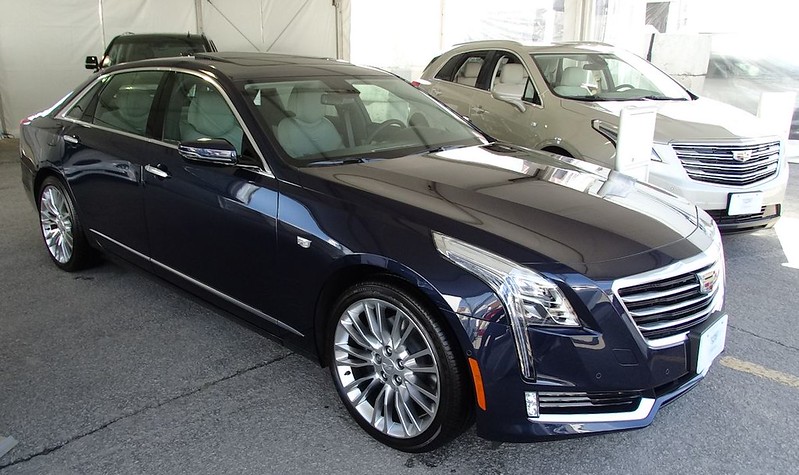 |
| Photo Credit: Chris Nagy |
An unofficial homecoming event for me each year, the Georgian College Auto Show has been a constant source of joy for me. An show put together by students of the automotive sales and marketing programs, the outdoor exhibition carries its own unique charm. Not as flashy as the Canadian International AutoShow in Toronto, the vivid collection of vehicles organized by students still represents the majority of auto manufacturers producing automobiles for the North American market in a positive light. Instead of the beaming of fluorescents and large turntables, the campus' field and the warmth of a natural, cooperative early June sunlight is all that is needed to bring out beauty on four wheels.
An annual event since 1985, I've personally attended every Georgian College Auto Show since 1997. Ever since I've been going to the auto show (including years when I attended the college as a student), the campus has changed and the cars have evolved. The first time I attended it, I remembered seeing a Toyota Prius for the first time in person. Several years before the popular gasoline/electric hybrid would be sold in Canada, I recalled the show car was a right side drive model. The early brochure of the Toyota Prius was one of two memorable keepsakes I gained that day. The second was a poster of a Sebring Silver 1997 Chevrolet Corvette where I obtained despite being pressed against a counter in the General Motors display by the about 30 other more aggressive high school students who also wanted one.
Flash-forward to 2016, hybrid vehicles have long been disassociated as an oddity. The all-new 2016 model year Prius was positioned within the Toyota display space alongside a Toyota Camry Hybrid sedan and the RAV4 Hybrid crossover vehicle. Of course, Toyota is no never alone in the hybrid or electrified vehicle realm. Kia featured an Optima Hybrid, the 2016 Chevrolet Volt plug-in hybrid revealed alternative powertrain technology from an American auto brand and a pre-production version of Ioniq Hybrid was part of Hyundai's presentation at the show. Debuting for the North American public at the 2016 New York International Auto Show in April, the Georgian College Auto Show was the first time I saw the new purpose-built eco car. I had a most delightful interaction with one of the student brand representatives at the Hyundai display that complemented my first experience with a car that was only recently introduced to the public.
 |
| Photo Credit: Chris Nagy |
The Hyundai Ioniq was one of several cars I was granted almost full access to during my time at the 2016 Georgian College Auto Show. I started the day behind the wheel of a Ford Mustang Convertible California Special and would later spend time in a Chevrolet Corvette Stingray Convertible, Cadillac CT6 sedan, Dodge Challenger SRT Hellcat, 2017 Fiat 124 Spider, Mitsubishi Outlander and a Volkswagen Beetle Denim Edition along with others. Able to be so close and inside those vehicles gave me many unique feelings. I remembered almost falling into Fiat 124 Spider after I failed to completely appreciate the lowness of seating for the sports car. Sitting in the Chevrolet Corvette Stingray Convertible, you can practically close your eyes and expect to locate all the controls. Before entering the Beetle Denim Edition, a brand representative called my attention to the sides of the front seats that featured quint jean-style pockets.
 |
| Photo Credit: Chris Nagy |
In February, I attended the one of the largest Canadian displays of automobiles in one place. The 2016 Canadian International AutoShow is definitely a immersing automotive venue but media day is just not enough to fully appreciate the newest of the new vehicles. Unintentional contention with other journalists for time as well as the fluid situation of one press conference after another provides little chance to simply bask in the surroundings. The opportunity for me to simply absorb the day is one fun thing about the 2016 Georgian College Auto Show. With many all-new models having already premiered, it was easy to capture images and videos of vehicles like the Lincoln Continental and Chrysler Pacifica.
Every year, there is an impressive group of students helming the show in general and the tents for the various manufacturers. There dedication to the cars, trucks and crossovers they're presenting is often a thrill where I meet knowledgeable auto enthusiasts. Already talking about a pleasing few minutes at the Hyundai tent with the Ioniq hybrid, there was also a fun engagement at the Mazda display. Presenting the new CX-9 crossover, it was my first time to see and feel the interior of the vehicle. In the time I was observing the vehicle, a Mazda representative told me about the real wood trim I have just admired inside the Mazda crossover vehicle. I was sorry to put on the spot intrigued by the kind of wood used but he did try to find the answer. Reviewing the Mazda CX-9 press kit at home, it turned out to be Rosewood trim that, according to Mazda, was supplied by a guitar manufacturer called Fujigen. Contrasting my inadvertent effort to stump a poor brand representative, I deeply admire the efforts and exhibition of skill compelled from each student ambassador. At this year's show, one student representative at the Ford tent was kind enough to capture some excellent images of me with the 350-horsepower Ford Focus RS. In a miracle, the images actually made me appear half-decent looking. A real A+ effort came from everyone I had contact with at this year's show.
 |
| Photo Credit: Chris Nagy |
Arriving for Friday, I'm aware I missed one key attraction. On Saturday and Sunday, part of the Georgian College campus parking lot is transformed into a track where Pfaff Porsche provide rides to spectators. For a minimal $5 donation towards recovery efforts for Fort McMurray, Alberta, the experience was advertised as an escorted test drive. While I missed out on Pfaff Porsche's test track, I was fortunate to see a pair of Porsche GT3 Cup race cars roll out from a transporter. Orey Fidani 's #13 Porsche GT3 Cup Canada Challenge car and the #09 Pirelli World Challenge car of recent winner at Canadian Tire Motorsport Park Chris Green made a thunderous entrance. Some bonus content was the 2017 Macan GTS that followed the #13 as it drove into the auto show's Porsche display.
In the approximately four hours touring the 2016 Georgian College Auto Show, I've visited brands representing North America, Japan, South Korea, Germany and Italy (this year's show was the first time I saw Alfa Romeo as an exhibit). As this Georgian College alum concludes my recap of the 2016 auto show, I find this year's event slogan "Driving Innovation Forward" as a respectable note not only for the automobiles. I have been a witness to the path of innovation through the auto show since 1997. May the students and attendees making forward be encouraged by the 2016 sights to pursue new reaches.
The following photo album of the 2016 Georgian College Auto Show are found on Flickr:


Comments
Post a Comment